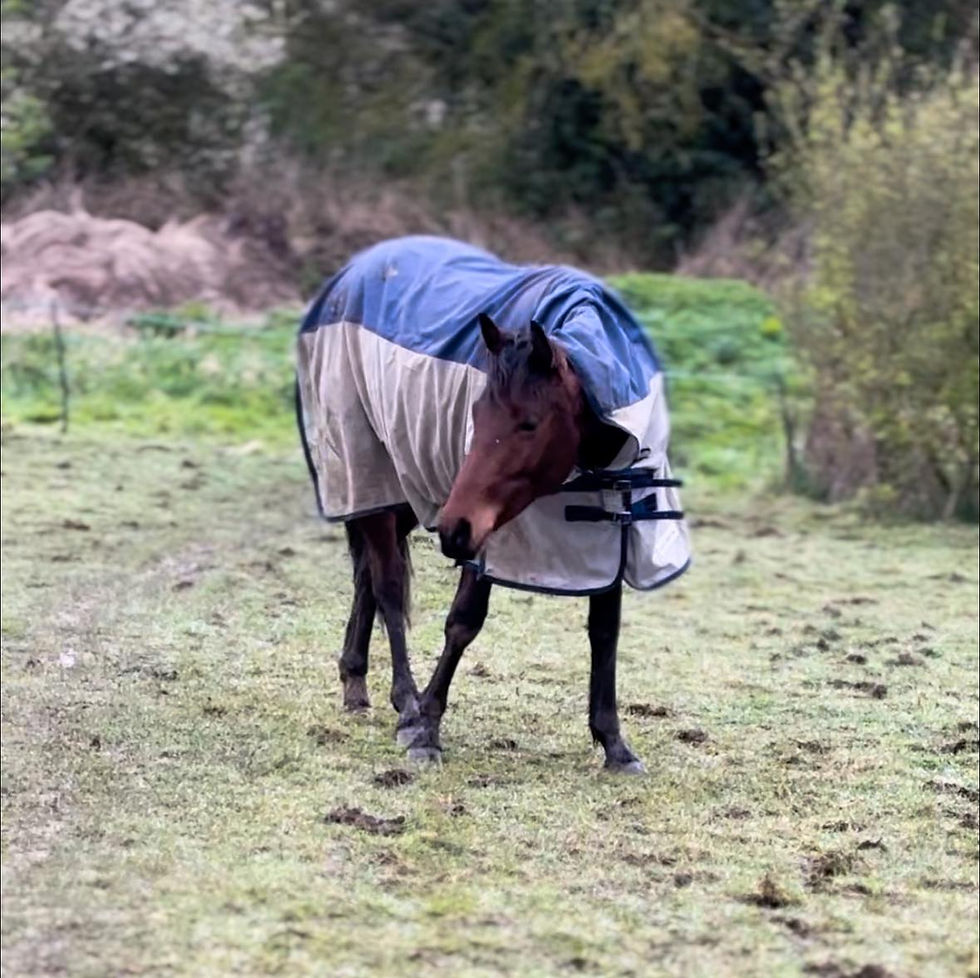What to do if you horse goes lame at an endurance ride
- Bella Fricker

- Sep 7, 2024
- 3 min read
Updated: 4 days ago
It's never the ideal scenario. We'd all love it if our horses were 100% sound, 100% of the time. Unfortunately, very few horses have this kind of record and there's a chance that they will one day fail a vetting at an endurance ride. I don't deny at all that it can be a challenging and emotional experience. We pour so much of our time and energy into the training and preparation for that ride it can be so upsetting when it doesn't work out. And of course, especially upsetting that we're taking a lame horse home who is in pain.
Here's my step-by-step guide to help you navigate this situation and ensure your horse receives the best care possible.
Work with the Ride Vets
It's so important to remember that the ride vets are there to be the guardians of horse welfare and any decision they make is always in the best interest of the horse. Even if you don't agree with their assessment, it's really key to try and engage with the ride vets to gain a clear understanding of the problem area. After all, they are the professionals and should be able to provide valuable insights into what might be causing the lameness. Ask them specific questions about the nature of the lameness (try and get as specific as possible) and any recommendations they have. Understanding the exact issue will guide your next steps and help you communicate effectively with your home team.
Film Your Horse at the Venue
If you have crew with you, take the opportunity to film your horse’s movement immediately after vetting. Often the lameness will change course over the coming hours and it's important to capture exactly what the line vets saw if you are to tackle the issue going forward. Share this video with your home vet & physiotherapist/osteopath/chiropractor. This allows your team to make a more informed assessment of the lameness and suggest appropriate treatments or interventions. Video evidence is invaluable in providing context and aiding remote diagnoses.
Handle Expected Lameness with Your Home Team
I know this may sound a strange thing to say because we of course enter ever ride thinking that our horse is capable of that distance/terrain/speed and so really we shouldn't be expecting a lameness. However, if the lameness is something you could anticipate—perhaps due to a pre-existing condition or a minor issue—continue to work closely with your home team. They will already be familiar with your horse's history and can offer targeted advice or treatment plans.
Address Unexpected Lameness Promptly
For unexpected lameness, where the issue seems out of the blue, it’s crucial to get the ride vet's initial feedback and get that across to your own vet as soon as possible. They can then decide whether to come to you on the Monday morning or if it's a potential soft tissue injury it might be that you need to take your horse in for a scan in 10 days time. Either way, an immediate discussion with your home vet is essential to start the diagnosis and potentially treat any underlying issues before they progress. Prompt action can make a significant difference in the outcome and recovery process.
Restrict Movement According to Severity
Depending on the severity of the lameness, and in consultation with the ride vet or your home vet you may need to restrict your horse's movement on the evening of the ride and the following days. It is so important to understand the potential reason for the lameness as if it's a joint issue for example then movement will be incredibly important to help prevent stiffness and more swelling overnight. However, for more severe lameness and certainly if there is a soft tissue concern, complete rest might be necessary. Consult with professionals about the best approach for managing movement to prevent aggravating the condition and to support healing.
Don’t Panic
It’s completely natural to feel worried or frustrated when facing a lameness issue, I've been known to have the odd cry back at my trailer. However, panicking can cloud your judgement and hinder effective decision-making. Take a deep breath, follow the steps outlined, and rely on the expertise of the professionals around you. Remember, most lameness issues can be managed successfully with the right care and approach.
If you enjoyed this content and would like to support more blog posts like this, consider buying me a coffee! Your contribution helps keep the site going and ensures I can continue creating valuable content for you. Thank you for your support! ☕💛





Comentarios